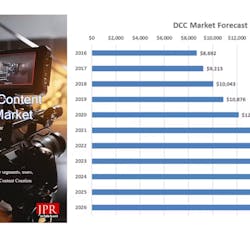According to VAB, a number of commonly held video viewing beliefs are actually fallacies. The research house examines views relating to cord cutting; time spent viewing video via linear TV compared to viewing using internet connected devices; younger audience viewing behavior; as well as misconceptions about moviegoers.
MYTH: Everyone is cutting the cord and leaving cable for video substitutes and subscriptions
- The reality is the majority of U.S. households today (82 million) have multichannel video programming distributor (MVPD) subscriptions.
- MVPDs are the leading video distribution access point for consumers, followed by over-the-air-only (18.4 million), over-the-top (OTT)-only (16.4 million) and virtual MVPD delivery (9.3 million).
- In 2020, projections estimate four times more households with MVPD subscriptions (78.8 million) than OTT-only households (18.3 million) and seven times more than virtual MVPD households (10.8 million).
MYTH: Everyone is spending more time on platforms like Facebook and YouTube than ad-supported TV
- According to VAB, in any given minute there are seven times more people 18+ years of age watching ad-supported TV content than are on YouTube and 13 times more than are on Facebook.
MYTH: No one under 35 watches linear TV anymore because they are living on subscription VOD platforms, digital sites and social media
- 50% of video consumption by adults 18-34 years of age is through linear TV (nearly two hours per day), with live TV accounting for 44% of total video viewing in the first quarter of 2019.
- The time adults 18-34 years spent viewing video on Internet-connected devices and gaming consoles was 20% and 14% respectively.
MYTH: No one goes to the movies anymore because of streaming services
- In the last decade, box office revenue has grown 24%, with 2018 breaking records for domestic box office revenue ($12 billion in ticket sales) and over 1.3 billion admissions.





